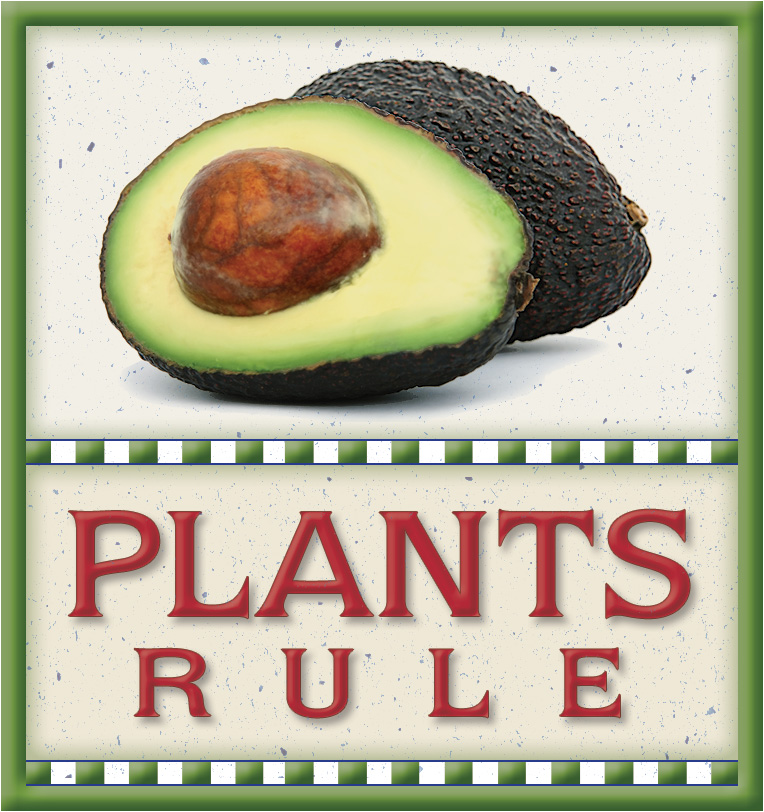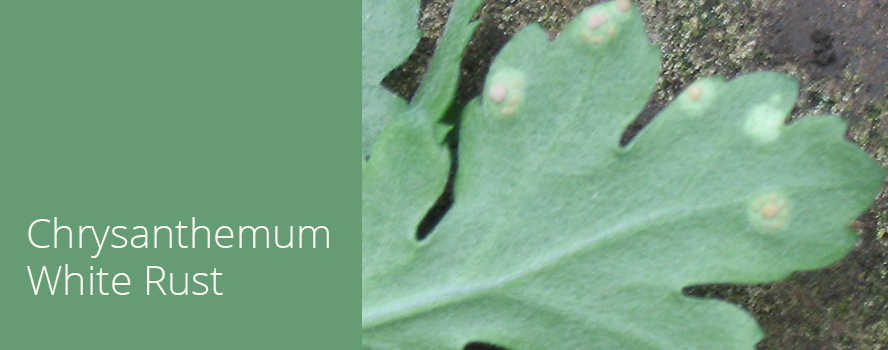Photo by Dr. Heather Scheck
Chrysanthemum White Rust Outbreak in Southern California
by Helga George, Ph.D.
A potentially devastating chrysanthemum rust fungus was found in Santa Barbara County in October, 2010, but was eradicated within two months.
An aggressive fungal pathogen had infested two nurseries in Carpinteria, California, that raise chrysanthemums. Chrysanthemum white rust (CWR), or Puccinia horiana, has the potential to destroy entire chrysanthemum industries. The gross value of chrysanthemums raised in Santa Barbara County in 2009 was $8.6 million (Tingos). Because of the grave threat it poses, chrysanthemum nurseries monitor for the appearance of this fungus. If discovered, the fact is immediately reported to the state and federal governments, which then place the nurseries under quarantine. Fortunately, several factors make this disease relatively easy to eradicate with the destruction of potentially infected plants, crop sanitation, and fungicide treatment once it has been discovered. As of early December, 2010, the disease had been eliminated from Santa Barbara County.
Discovery of Chrysanthemum White Rust on Carpinteria Chrysanthemums
Because CWR spreads so quickly, chrysanthemum growers keep detailed records of the source of their cuttings and continually monitor for the pathogen. Infection is favored by cool weather and high humidity. Thus, sometimes the disease can be present at low levels, but remain undetectable, until it rapidly increases when the environmental conditions are right for an epidemic. Despite this preference for cool weather, according to e-mail by Heather Scheck, plant pathologist for Santa Barbara County, “Historically, detections have been made in every month of the year in California.”
There have been sporadic outbreaks of this form of chrysanthemum rust in commercial nurseries in California and other parts of the United States since 1991. Vigilant efforts at monitoring imports and nursery stock have kept the pathogen from taking hold in the US. It is a constant battle to maintain control over the pathogen, however. According to Dr. Scheck in a phone interview about Santa Barbara County, “In my twelve years, I think we’ve never gone more than 18 months without an outbreak.” Of the cities that grow flowers in this County, she said there have been outbreaks in Carpinteria, but none elsewhere.
Fortunately, the disease has very distinctive symptoms and is quickly spotted by trained inspectors. Chrysanthemum white rust has spots that form on the upper parts of the leaves, and pustules that form on the bottoms. On the top of the leaf, they are yellow to light green and turn brown as the tissue dies. Underneath, the pustules are pink to beige and become white as they age (Callahan). Two nurseries in Carpinteria were discovered to have the distinctive pustules of white rust during a routine fall inspection by the County Agricultural Commissioner’s office and the US Department of Agriculture (USDA). They were placed under quarantine in October, 2010, and started eradication efforts.
Eradication of Chrysanthemum White Rust in Santa Barbara County
The factors that make this disease easy to control are that it requires living tissue, and the spores quickly die. Also, it has very few hosts and only affects some types of cultivated chrysanthemums. Once the disease was discovered, the growers acted quickly with help from the Agriculture Commissioner’s Office of Santa Barbara County. There are two aspects of the control strategy for this disease (APHIS). The first is to destroy the infected plants and all healthy plants within one meter that have been exposed to the pathogen. The second is to treat the remaining healthy chrysanthemum plants with fungicides to protect them from being infected or destroy all the plants and treat all the nursery’s soil with steam.
For the buffer zone, a one meter area around each spot where the pathogen is detected is kept free of chrysanthemums. Since rust fungi require living tissue to survive, they should not be able to spread if there are no susceptible plants nearby. This is particularly important, since one of the two types of spores produced by rust fungi—the basidiospores—can cause infection in as little as two hours if the environmental conditions are right. Workers could potentially transport the fungus on clothes, tools, and gloves, so one should be very careful when entering and exiting an infested area. It is strongly suggested that such individuals avoid uninfested production areas.
The remaining plants that are thought to be uninfected were treated with fungicides regularly until it was clear that the rust fungi had been eliminated. Myclobutanil is a standard fungicide to use. In Carpinteria, the commonly used azoxystrobin was also utilized in rotation. The nursery managers had the option of spraying every 5-7 days. It was easier for their operations to spray on a seven day cycle, as this did not interrupt the operation of the greenhouses. After the third cycle of spraying, the monitors waited 5-7 days and then checked for signs of the fungus. When it was absent, the nurseries were allowed to begin selling chrysanthemums again. This whole process took less than 4-5 weeks.
Chrysanthemum White Rust is Easily Controlled by Fungicides if Infection is Detected Early
Rust fungi do not kill their hosts, but can cause economically devastating epidemics. Chrysanthemum white rust is a disease that is endemic in many parts of the world, but is not established in the United States. There are occasional outbreaks in several states, including California. These infestations cause the afflicted nurseries to be placed under quarantine, where the infected plants are destroyed. In October, 2010, two chrysanthemum growers in Santa Barbara County, California, detected this disease. The uninfected plants were treated with alternating weekly applications of one of two fungicides. The infections had been eradicated by December, 2010. Fortunately, chrysanthemum white rust remains un-established in the United States.
References:
APHIS. November, 2005. Chrysanthemum White Rust (CWR) Eradication Protocol for Nurseries Containing Plants Infected with Puccinia horiana Henn. aphis.usda.gov, accessed December 2010
Callahan, J. 2004, revised by M.B. Dicklow, November, 2010. Pest Management. Chrysanthemum White Rust. umass.edu, accessed December, 2010.
Scheck, H. 2010. Agricultural Commissioner’s Office, Santa Barbara County, CA. personal communication.
Tingos, G. 2009. Agricultural Production Report 2009. countyofsb.org, accessed December, 2010
QUICK LINKS TO ALL
Suite.io Articles
by Helga George, Ph.D.
AGRICULTURAL SCIENCE
• Polyphenol Oxidase Enzymes Cause Browning of Fruits and Vegetables
CHEMICAL ECOLOGY
• Domoic Acid Poisoning in Sea Lions
• Insects that Make Cyanide
PLANT PATHOLOGY
• Plants Produce Chemicals as a Defense Against Pathogens
• Wheat Rust Threatens World’s Wheat Crops
• Biotrophic Versus Necrotrophic Fungi
• Fungal Haustoria Absorb Nutrients from Living Plant Cells
• The Gene-for-Gene Concept: a Central Tenet in Plant Pathology
GARDENING
• Oenothera speciosa—a Drought Tolerant Perennial Groundcover
• The Magic Lily—a Drought Tolerant Species of Lycoris
SOIL MICROBIOLOGY
• Streptomyces, Antibiotics, and Microbial Conflict in the Soil
AGRICULTURE IN SANTA BARBARA COUNTY
• Chrysanthemum White Rust Outbreak in Southern California

